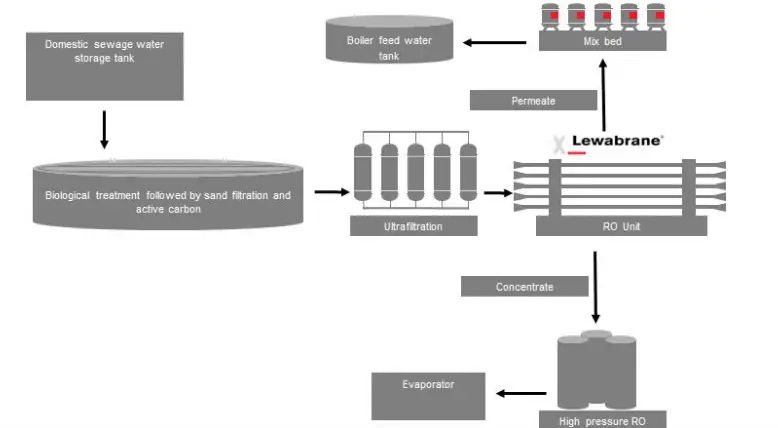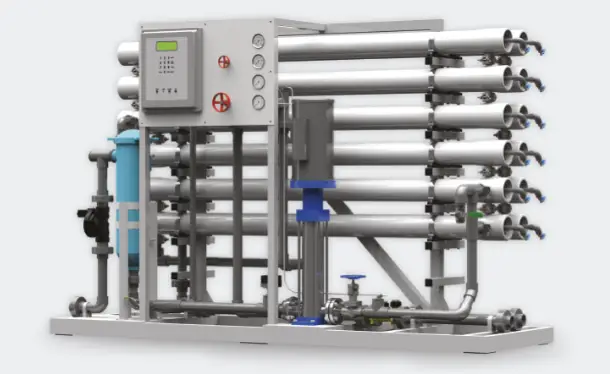Water purification technology has advanced significantly, offering multiple methods to ensure the safety and quality of drinking water. Among these, ion exchange and reverse osmosis stand out as two of the most effective systems used today. Each technique employs distinct mechanisms to remove contaminants from water, catering to diverse needs and specifications.
Ion exchange and reverse osmosis are two fundamentally different processes used for water purification. Ion exchange removes contaminants through the exchange of ions with other ions attached to a resin within the system. In contrast, reverse osmosis uses a semipermeable membrane to remove ions, molecules, and larger particles from drinking water. Understanding these differences is crucial for choosing the appropriate system based on specific water quality requirements.
The efficiency and applicability of ion exchange and reverse osmosis vary widely, influenced by factors such as the nature of the impurities, the desired purity level, and cost-effectiveness. While ion exchange is particularly effective in softening water and removing metallic ions, reverse osmosis excels at reducing a broader range of contaminants including bacteria and viruses, providing comprehensive water purification.

What is Ion Exchange?
Basic Concept and Process
Ion exchange is a water purification method that operates on the principle of exchanging ions between a solution and an ion exchange resin. This process typically involves passing water through a column filled with ion exchange resin. The resin contains active sites that attract and bind specific ions from the water while releasing other ions back into the water. For example, in water softening, calcium and magnesium ions, which are responsible for water hardness, are exchanged for sodium ions.
The basic steps in ion exchange include:
- Water Inflow: Contaminated water enters the ion exchange column.
- Ion Swapping: Unwanted ions in the water are exchanged for less problematic ions held by the resin.
- Water Outflow: Treated water exits the system, now with reduced concentrations of the targeted contaminants.
Common Uses
Ion exchange systems are widely used in various applications:
- Water Softening: Most commonly used to remove hardness from water, enhancing its quality for domestic use and prolonging the lifespan of plumbing.
- Deionization: Producing highly pure water for industrial applications, such as in pharmaceuticals and electronics manufacturing.
- Metal Recovery: Retrieving valuable metals from industrial wastewater.
- Water Treatment: Removing contaminants such as nitrate, fluoride, sulfate, and arsenic from drinking water.
What is Reverse Osmosis?
Fundamental Principles
Reverse osmosis (RO) is a filtration method that removes impurities from water by forcing water through a semipermeable membrane. This membrane allows water molecules to pass through while blocking larger molecules and dissolved solids, such as salt and other chemicals.
The key components of a reverse osmosis system include:
- Pre-Filtration: Removes large particles and chlorine that could damage the RO membrane.
- RO Membrane: The heart of the system, where the removal of dissolved solids occurs.
- Pressure Pump: Creates the necessary pressure to push water through the RO membrane.
- Post-Filtration: Polishes the water to improve taste and quality before consumption.
Typical Applications
Reverse osmosis systems find extensive use in many sectors:
- Drinking Water Purification: Common in both household and commercial settings to ensure safe, clean drinking water.
- Wastewater Treatment: Helps in the reclamation of wastewater, making it suitable for various uses.
- Food and Beverage Industry: Used to purify water that goes into products, ensuring quality and safety.
- Medical and Pharmaceutical: Provides ultra-pure water required for sensitive processes and formulations.
Key Differences
Process Mechanisms
The mechanisms of ion exchange and reverse osmosis differ significantly:
- Ion Exchange: Involves chemical exchanges between the water and the resin.
- Reverse Osmosis: Employs a physical barrier to remove impurities based on size exclusion.
Quality of Water Produced
Both methods improve water quality, but their effectiveness varies by contaminant:
- Ion Exchange: Exceptionally effective at removing specific ionic contaminants.
- Reverse Osmosis: Offers broader purification, removing up to 99% of all dissolved particles in the water.
Energy and Cost Efficiency
While both systems require ongoing maintenance, their cost and energy efficiencies differ:
- Ion Exchange: Generally has lower energy requirements but may incur higher maintenance costs due to resin replacement.
- Reverse Osmosis: Typically has higher energy demands due to the pressure required but is less labor-intensive over time.
Benefits of Ion Exchange
Advantages in Specific Scenarios
Ion exchange offers distinct advantages in scenarios where specific ions need to be targeted for removal, such as:
- Targeted Ion Removal: Highly effective at removing ions like calcium and magnesium, which cause water hardness.
- Regeneration Capability: The ion exchange resin can be regenerated, restoring its effectiveness.
Cost Implications
The initial setup cost for ion exchange systems is generally lower than for reverse osmosis systems. However, the operational cost can vary depending on the frequency of resin regeneration and the nature of the contaminants.
Benefits of Reverse Osmosis
Advantages Over Other Methods
Reverse osmosis (RO) stands out among water purification techniques for its ability to effectively reduce a wide range of contaminants. This process not only removes particles, but also a vast array of dissolved and particulate matter which ion exchange and other filtration methods might leave behind. The advantages include:
- Broad Spectrum Purification: Capable of removing up to 99% of all waterborne contaminants, including salts, particles, bacteria, and viruses.
- Taste and Odor Improvement: Offers superior enhancement of water taste and smell by removing organic and inorganic substances.
- No Chemicals Needed: Operates without the need for chemical additives, making it safer and more environmentally friendly.
Economic Factors
While reverse osmosis systems generally have higher initial costs, they provide long-term savings through:
- Durability: RO systems are robust and have longer lifespans with proper maintenance.
- Less Frequent Maintenance: The need for part replacements and repairs is less frequent compared to other systems like ion exchange.
- Energy Efficiency: Modern RO systems are increasingly energy-efficient, reducing operating costs over time.
Choosing the Right Method
Factors to Consider
Selecting the best water purification method involves evaluating several critical factors:
- Water Quality Needs: Assessing the specific contaminants present in the water and the desired quality of the finished product.
- Volume and Flow Requirements: The amount of water needed daily and the flow rate at which it needs to be purified.
- Operational Costs: Considering both the initial setup costs and ongoing maintenance expenses.
- Environmental Impact: The sustainability of the purification method and its impact on the environment.
Case Studies
Examining real-life applications can illustrate the effectiveness of each method:
- Municipal Water Treatment: Many cities adopt reverse osmosis for its ability to provide safe drinking water at a large scale.
- Rural Applications: In areas where water hardness is a major issue, ion exchange systems are more commonly employed to soften water.
Maintenance and Care
Ion Exchange Systems
Maintaining an ion exchange system involves:
- Regular Resin Regeneration: Ensuring the resin is regularly regenerated with salt to maintain its effectiveness.
- Resin Replacement: Monitoring the lifespan of the resin and replacing it as needed to ensure optimal performance.
- System Cleaning: Preventing bacterial growth and scaling within the system through routine cleaning.
Reverse Osmosis Systems
Care for reverse osmosis systems includes:
- Membrane Replacement: The RO membrane should be replaced every 2 to 3 years depending on usage and water quality.
- Filter Changes: Pre and post-filters should be replaced according to the manufacturer’s recommendations to maintain water quality.
- System Sanitization: Periodic sanitization of the entire system to prevent microbial growth.
Future Trends
Innovations in Water Purification
Advancements in technology continue to shape the future of water purification:
- Nano-filtration Technologies: Emerging technologies that enhance the selectivity and efficiency of filtration processes.
- Automation in Water Treatment: Automated systems that monitor and adjust settings in real-time to optimize water purification processes.
- Sustainable Materials: Development of more sustainable materials for use in filtration systems to reduce environmental impact.
Environmental Impact
The environmental considerations of water purification are becoming increasingly important:
- Waste Reduction: Techniques that minimize waste production during the purification process.
- Energy Usage: Innovations that reduce the energy consumption of purification systems.
- Recycling Spent Materials: Methods for recycling or repurposing spent filtration materials, like used membranes and resins.
Frequently Asked Questions
How do ion exchange systems work?
Ion exchange systems purify water by swapping undesirable ions in the water with more acceptable ones. This process is particularly effective for removing heavy metals like lead and cadmium, as well as for softening water by exchanging magnesium and calcium ions with sodium or hydrogen ions.
What contaminants does reverse osmosis remove?
Reverse osmosis can remove up to 99% of dissolved salts (ions), particles, colloids, organics, bacteria, and pyrogens from the water. However, it does not guarantee the removal of 100% of viruses and certain types of bacteria.
Is ion exchange or reverse osmosis more cost-effective?
The cost-effectiveness of ion exchange versus reverse osmosis depends on the specific water purification needs and the initial water quality. Ion exchange is generally less costly upfront but may require more frequent maintenance, while reverse osmosis offers a more robust system with potentially higher initial costs but lower long-term maintenance expenses.
Can either system improve the taste of water?
Both systems can improve the taste of water, but reverse osmosis is particularly effective at removing dissolved organic compounds and other substances that can cause taste and odor issues in water.
Conclusion
Choosing between ion exchange and reverse osmosis depends on various factors, including the specific contaminants present in the water and the desired level of purity. Each method offers unique benefits and is suited to different situations. Ion exchange is ideal for targeting specific ionic contaminants and for applications where water softening is required, whereas reverse osmosis provides a more comprehensive solution for removing a wide array of impurities.
In conclusion, the decision to use ion exchange or reverse osmosis should be guided by a thorough analysis of water quality, purification needs, and budget considerations. Consulting with a water treatment expert can provide valuable insights and help ensure that the chosen method meets both current and future water purification needs effectively.

